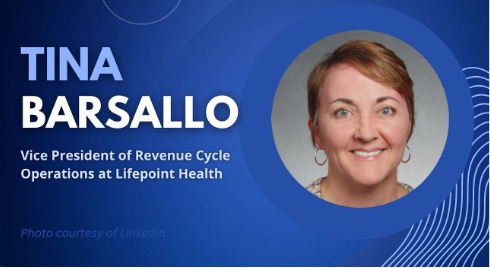The vice president of revenue cycle operations at Lifepoint Health details its journey in price transparency adherence.
The Semi-Annual Hospital Price Transparency Compliance Report, recently published by PatientRightsAdvocate.org, analyzed 2,000 of the nation's largest hospitals to determine price transparency compliance.
Compliance was based on the inclusion of machine-readable files for all items and services, as well as price display of the 300 most common shoppable services. The newest findings reveal a modest increase in compliance percentage since the previous report in August 2022, with 24.5% of hospitals (489) now compliant, compared to 16% last year.
One system that took one of the top spots in compliance was Lifepoint Health. According to the report, 73% of hospitals owned by Lifepoint Health were found to be in compliance with the price transparency law.
So how is the system working to perfect its price transparency adherence? HealthLeaders met up with Tina Barsallo, vice president of revenue cycle operations at Lifepoint Health, to chat about the health systems’ strategies.
HealthLeaders: Congratulations on achieving high marks in adherence! What was the process like for Lifepoint in adhering to price transparency requirements?
Tina Barsallo: We created an internal pricing transparency team in the year prior to the regulation’s effective date. Team members included revenue cycle operations, revenue cycle analytics, compliance, managed care, legal, and project management. Other team members were brought in as needed, such as our facility revenue cycle management leaders and CFOs.
The pricing transparency team evaluated the requirements thoroughly and outlined the proper path for Lifepoint, and then executed on each aspect to ensure the requirements were met. The team continues to meet regularly to confirm there have been no changes to the requirements, and the revenue cycle team handles on-going monitoring of the websites and links, as well as the annual refresh.

HealthLeaders: Even before the creation of your internal pricing transparency team, did you have any pre-existing processes in place, or did you have to create all new processes from scratch?
Barsallo: Prior to the rule, Lifepoint provided estimates to patients as a standard practice. Our internal tool was used as a model to develop the patient-friendly tool published on our websites for the shoppable services. The machine-readable file was newly developed from scratch, and we have worked to automate this file as much as possible.
HealthLeaders: What advice do you have for other revenue cycle leaders looking to shore up their price transparency efforts?
Barsallo: If possible, pull a team together to create joint ownership and partnership in creation of the tools and to help drive consistency and compliance. Reach out to peers to brainstorm on ways they have accomplished compliance, so you don’t need to reinvent the wheel. It is extremely helpful to collaborate with other providers and health systems. Both paths were two key activities and steps taken by Lifepoint.
Amanda Norris is the Director of Content for HealthLeaders.
KEY TAKEAWAYS
A recent report found 24.5% of hospitals are compliant with price transparency.
Helping to lead the pack is Lifepoint Health. 73% of the hospitals owned by the system were found to be in compliance.
Tina Barsallo, vice president of revenue cycle operations at Lifepoint Health, chats about the health systems’ strategies in adherence.
